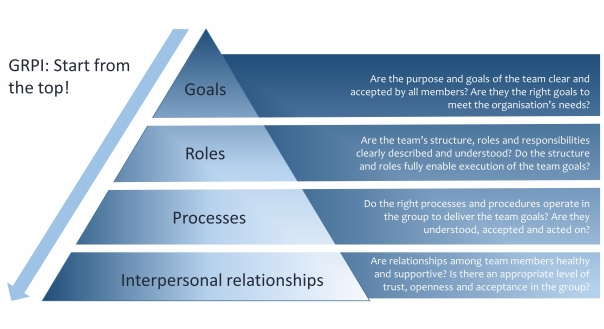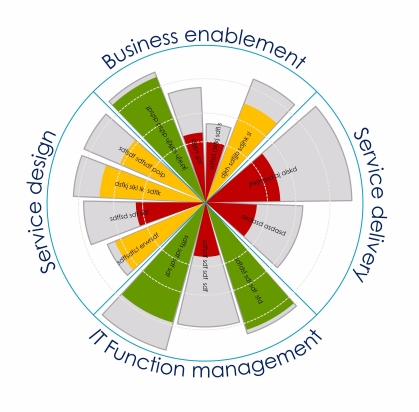Summary
Many organisations are struggling to adapt to the current pace of change. Teams are under-delivering, but it’s hard to know where to focus improvement.
In this first blog article, I introduce the concept of organisational diagnosis, exploring two different types of tools and the different insights they can bring. I provide real-life examples of how I have applied them in a range of organisations, and how these insights have been the catalyst for rapid, sustainable improvements in team performance.
This article is a “deep dive” into one of the most fundamental aspects of organisation development. There’s plenty to talk about: this longer article provides a broad overview, which I will follow with a series of shorter, focused articles on specific topics. Do let me know if there’s something in particular you’d like me to hone in on!
Introduction
I can’t be the only one who feels like life just get faster and faster! Who else feels that the pace of change just doesn’t slow down?
Changed consumer expectations, challenger banks, 24/7 availability, increasingly tech-savvy colleagues, Brexit, making sense of the digital agenda … all conspire to ramp up organisations’ need for faster pace of change.
But from what I see, many organisations haven’t adapted to this new urgency. There’s a real perception among business leaders that their organisational change capability just can’t keep up, and can’t deliver the IT, people and process change that’s needed to stay ahead of the game. And as IT, HR and business change functions fail to respond to organisational needs, sometimes these business areas will just go off and do their own thing.
Last year, I was introduced to a new client, a senior executive in an organisation that had recently merged with another. His challenge: our IT function isn’t delivering for us. Our merger migration project went right down to the wire. Our business functions have so many unmet IT needs. I can’t get a clear picture of what’s going on… We need to restructure IT, but what’s the organisation structure that I need?
I’ve had a few conversations like this. A senior leader is concerned that one of their teams isn’t delivering as it should, or is putting the organisation at risk. But what’s the root cause? Is it really the wrong organisation structure? A personality clash with the team manager? Or is there a more pervasive cultural issue?
In the business world many of us work in roles that have an engineering, numerate or process bent: software development, project management, risk management, assurance, finance. Our backgrounds may be in engineering, science or maths. Unless we have some grounding in psychology or social science, “organisational culture” may feel intangible and hard to define…which makes the idea of changing the organisation culture an even slippier proposition!
So leaders are left with the challenge of: How can I get a handle on how this team is currently operating? What’s truly important for this team to operate well? How can I succinctly describe what’s currently going on (or not) in a way that can help me understand what needs to change where?
Taking a fresh look
When I start working with a team or business function, I find it really helpful to use some structured diagnostic tools. It takes experience to select the right tool for the job: two that I find to be particularly versatile and insightful are:
- An organisational diagnosis
- A functional “maturity model” for the relevant discipline e.g. IT or HR.
Did I say diagnostic tools? Yes I did. It’s pretty hard to deliver successful change if you don’t know your start point. If you’d inherited a big, dilapidated house from an elderly aunt, would you start investing your hard-earned cash in doing it up before you got a professional engineer to give you a proper site survey? There’s not much point in repainting the bathroom if the wiring’s about to combust.
In the same way, no amount of team nights out will build a high performing team if the fundamental goals of the team are unclear and people constantly argue about what the team should be delivering. Restructuring current staff won’t help you if you don’t spot that there are some fundamental capabilities missing. Without proper diagnostic insight you may not get to the bottom of the real issues or put your remedial effort in the right places – and you certainly won’t make progress as fast as you could.
So, what do these diagnostic tools look like?
One of organisational diagnosis tools that I consider to be most powerful is GRPI, which was developed by organisational development pioneer Richard Beckhart.
The GRPI model describes the key conditions for team effectiveness:

It’s easy to conclude that an under-performing team behaves that way because “people just don’t get on” or “just can’t agree”. However, the GRPI model enables us to surface any deeper issues beneath the discontent.
For example:
- Without meaningful and clearly defined goals, there may be conflict and fighting about what the team should be delivering. This may be interpreted as an interpersonal issue – but the deeper cause is lack of clarity and agreement on what the team is there to deliver
- With one team I worked with, the team leader was clear in his head what the team’s goals were. But most team members didn’t know, or had different interpretations of, these goals. And, talking to stakeholders, it transpired that they thought that the goals of the team needed to be something else again. The team was able to step up and deliver real value once we had engaged the stakeholders to reframe the team’s goals; and worked actively with the team so that they understood and internalised the new goals and refocused their work to achieve these
- Clear and conflict-free roles enable team members to fulfil their responsibilities. However, overlapping responsibilities can cause conflict or turf wars over “who does what,” which increases stress and poor performance…but might mistakenly be seen as a “personality clash”
- Conversely, if there are gaps between roles—where one role ends and another begins— important work is left incomplete. People may be hesitant to exercise initiative, and the team under-delivers on what’s expected
- In the same team it became apparent that the structure lacked accountability, decision-making and ownership of key issues. Stakeholders got stressed and annoyed as they felt that the team wasn’t pulling its weight or “getting important stuff done”. In this case, I reshaped the structure to deliver on newly clarified goals; clearly defined appropriate roles and accountabilities; and coached and supported staff so that they could fulfil their responsibilities effectively.
Is an organisational diagnosis in itself enough?
Tools such as GRPI are great at surfacing the deep issues that can hamper team effectiveness, and can catalyse deep improvement within teams. And yet, and yet… every team also needs to carry out particular activities that require functional and technical expertise. A struggling team may also have technical capability and skill gaps that contributes to its inability to deliver.
Which brings me to … functional maturity tools
If I think there are potential issues with a team’s functional and technical capabilities, I’ll want to get a handle on that using an appropriate functional maturity tool. These tools focus on a particular domain – let’s say IT – and identify the key capabilities that a strongly performing organisation should have. They define what each capability would look like at different levels of maturity (from “none present” to “industry-leading”), providing a basis for assessment and development.
In the case of IT, I work in tandem with a skilled IT practitioner using a proprietary tool that we have developed, called AccelerIT. AccelerIT defines all the capabilities required of a contemporary, value-enabling IT capability, grounded in industry best practice. These capabilities are grouped into four themes, as shown below.

AccelerIT enables deep understanding of current and desired IT maturity
(c) Direttissima 2017
Business enablement – deep understanding of business needs that drives IT strategy, architecture, innovation and governance
Service design – designing IT services that are appropriate, resilient and scalable for current and future needs
Service delivery – delivering a robust operational IT service to users, and delivering new projects that deliver benefit and can be operationalised effectively
IT function management – ensuring that you’ve got the right people, the right financial management and the right suppliers to underpin your IT function.
Using our AccelerIT tool, my colleague and I rapidly evaluate an organisation’s current IT capability to identify strengths, gaps and risks. The tool gives us a common language to work with key stakeholders to explore and agree what great IT capability would look like for their business (not every organisation has the same needs, and organisations don’t need to get to “industry leading” in every aspect). Depending on the nature of the gap between current and desired capability, it may be that an incremental improvement plan focused on a few areas is all that’s required; or that a fundamental reassessment of the IT operating model, structure and sourcing is needed to deliver a step-change in performance. In either case, we use our AccelerIT tool to engage and develop leaders and teams to deliver the changes that are needed, and to act as a reference point and benchmark to track progress to a more mature IT capability.
Coming back to the client in my introduction, what we identified in his organisation was a very “lop-sided” IT capability that was almost entirely focused day-to-day service delivery. The absence of meaningful business engagement, IT strategy, project prioritisation and future-proof design of new IT services meant that many organisational needs were unrecognised and unmet. Poor IT function management meant that roles were inappropriate and career development poor, resulting in low levels of staff satisfaction.
My colleague and I supported the client to implement a new operating model for IT, underpinned by clearly stated team goals, a new organisational structure, ways of working and action on cultural issues. New teams have been set up to properly engage on customer needs and translate this into enabling IT strategy, architecture and project portfolio, building stakeholder confidence in the IT function. Targeted external recruitment of key leadership and skill gaps is enabling the function to become more mature and professional at an accelerated rate. Staff feel confident that they understand their roles and accountabilities, and are supported by their managers to succeed. The morale and energy of the team has markedly improved as colleagues work as one team to deliver on the priorities that matter to the business. Finally, risks that were consuming inordinate management attention are decreasing in impact as part of a managed action plan. And the insights that were gained from using the two diagnosis models described above helped to ensure that we focused in the right places.
In summary then, what’s the value of these tools?
As you can see, when something’s amiss in an organisation, the thing that starts the alarm bells ringing is in fact more often a symptom than a root cause. By using the right diagnostic tools and skilfully interpreting the findings, I’ve enabled my clients to get a much deeper insight into what’s going on (or not) in their organisations. This has enabled us to work together to craft the right change interventions to deliver sustainable results.
And, above all, it’s given people a common language to talk about what’s going on, to understand what to aim for, and to track their progress to getting there.
If you’re concerned that one of your teams isn’t adding the value that it should, or if you’d like to explore how I could support you to accelerate change in your organisation, then please get in touch.